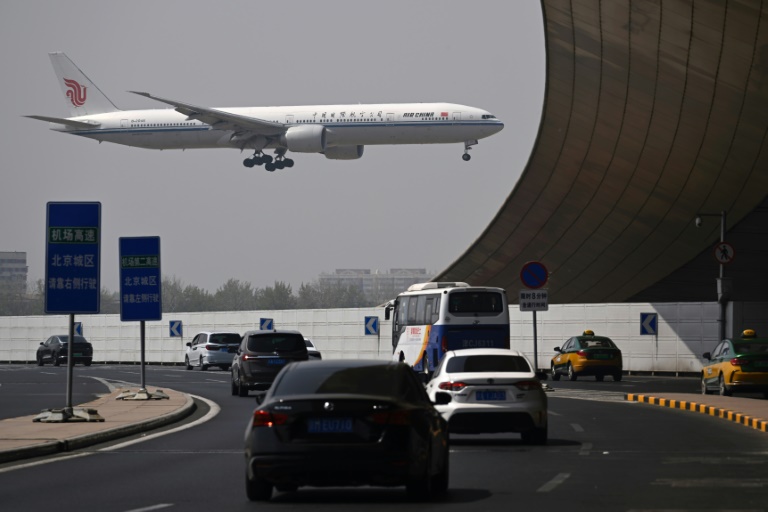Europe’s gas storage levels this week reached an uncomfortably low level of some 34% full. Germany’s alone has dropped to 29%. Yet LNG imports are about to pick up and, for a change, prices might not surge—thanks to China.
Earlier this month, Kpler data showed that China’s imports of liquefied natural gas had slumped to the lowest level in five years. At 4.5 million tons in total, these imports reflected a milder February, ample gas inventories that China has been building conscientiously ever since its 2017 gas crunch, and slower industrial activity.

Also, they reflected the Chinese response to Donald Trump’s tariffs, which took the form of retaliatory tariffs specifically targeting U.S. energy imports, with LNG subjected to a 15% import tariff.
if(window.innerWidth ADVERTISEMENTfreestar.config.
enabled_slots.push({ placementName: "oilprice_medrec_atf", slotId: "oilprice_medrec_atf" });';document.write(write_html);} New data from Kpler, cited by Reuters’ Ron Bousso, suggests quarterly imports of liquefied natural gas into China are going to be 22% lower than a year earlier, which will be a true boon for Europe, boosting the availability of LNG for the continent that keeps struggling with its energy security despite bold plans to reduce reliance on hydrocarbons and increase reliance on domestic wind and solar generation.
While Europe waits for this to happen, it is looking for diversification of its LNG supply due to the fresh tensions between Washington and Brussels, plus assorted European capitals. Drewry Research recently reported that it expected Europe to boost relations with other LNG suppliers, notably from Africa and Qatar. Indeed, the maritime research company said Europe was only going to become more, rather than less, dependent on imports of liquefied gas in the coming years—and U.
S. LNG producers will remain the primary source of the fuel for European buyers. Related: BP Approves Major Trinidad and Tobago Natural Gas Project One obvious reason is the relative proximity of Gulf Coast LNG plants and the European LNG import terminals.
Then there is the convenience of the spot market, where U.S. sellers often offer their production, and European buyers are eager to snap any available cargo when demand is on the rise.
The EU had an idea of joint gas procurement after the big gas crunch of 2022, but it appears that evidence suggests only partial success for the scheme, and partial here means tiny. The FT reported in September last year that, ultimately, the joint buying scheme only covered a very modest 2% of the European Union’s total demand for natural gas. Even so, the European Union itself has called the scheme “hugely successful” and has even completed a new round of joint gas bids for this year.
The period of the bids covers the next five years in recognition that the LNG spot market may be a nice place to be when you’re in urgent need of some gas, but it pays to plan your longer-term consumption as well. It is impossible to say for how long China’s LNG imports will remain subdued, so this is really an opportune time for European buyers to strike years-long deals for liquefied gas. Over the short term, Europe will likely avoid stratospheric gas prices as it starts replenishing its gas inventories—these are currently so low that the continent will need to buy an additional 20 million tons of LNG this year, according to Reuters calculations cited by Bousso in his column.
That translates into some 250 cargos, which, thanks to China’s weaker demand, will be more readily available for European buyers. if(window.innerWidth ADVERTISEMENTfreestar.
config.enabled_slots.push({ placementName: "oilprice_medrec_btf", slotId: "oilprice_medrec_btf" });`;document.
write(write_html);} Even so, Europe cannot afford any sense of false security just because China’s LNG imports are lower. First of all, this may be temporary. Second of all, LNG supply, based on historical evidence, often gets interrupted by various technical problems and outages, tightening supply.
Third of all, there are other countries with healthy demand for LNG just waiting for the price to turn right—meaning that at some point, Europe might once again become the top bidder for LNG cargoes to price out the competition. And this means the cost of its energy will remain challenging despite all the efforts being directed at lowering that cost. One way of reducing its vulnerability to Chinese LNG imports is the so-called “Japanese model”, which involves direct investment in overseas LNG projects and long-term supply contracts.
Climate think tank the Institute for Energy Economics and Finance was quick to slam the idea as unsuitable for Europe in the context of its transition plans for wind and solar. However, the fact that China’s slump in LNG purchases is being interpreted as a godsend for Europe should give LNG critics a pause. Perhaps it is time for Europe to admit that it lacks any viable alternatives to natural gas when it comes to reliable power generation—unless it counts local coal, which is what Germany leaned into after it closed its last remaining nuclear power plants.
But that looks even more awkward in the context of the transition push. The Japanese model might turn out to be a good idea to avoid having to keep fingers crossed that China will start importing less LNG next winter. By Irina Slav for Oilprice.
com More Top Reads From Oilprice.com.
Business

China's Falling LNG Imports are a Boon for Europe

Europe’s gas storage levels this week reached an uncomfortably low level of some 34% full. Germany’s alone has dropped to 29%. Yet LNG imports are about to pick up and, for a change, prices might not surge—thanks to China. Earlier this month, Kpler data showed that China’s imports of liquefied natural gas had slumped to the lowest level in five years. At 4.5 million tons in total, these imports reflected a milder February, ample gas inventories that China has been building conscientiously ever since its 2017 gas crunch,...














